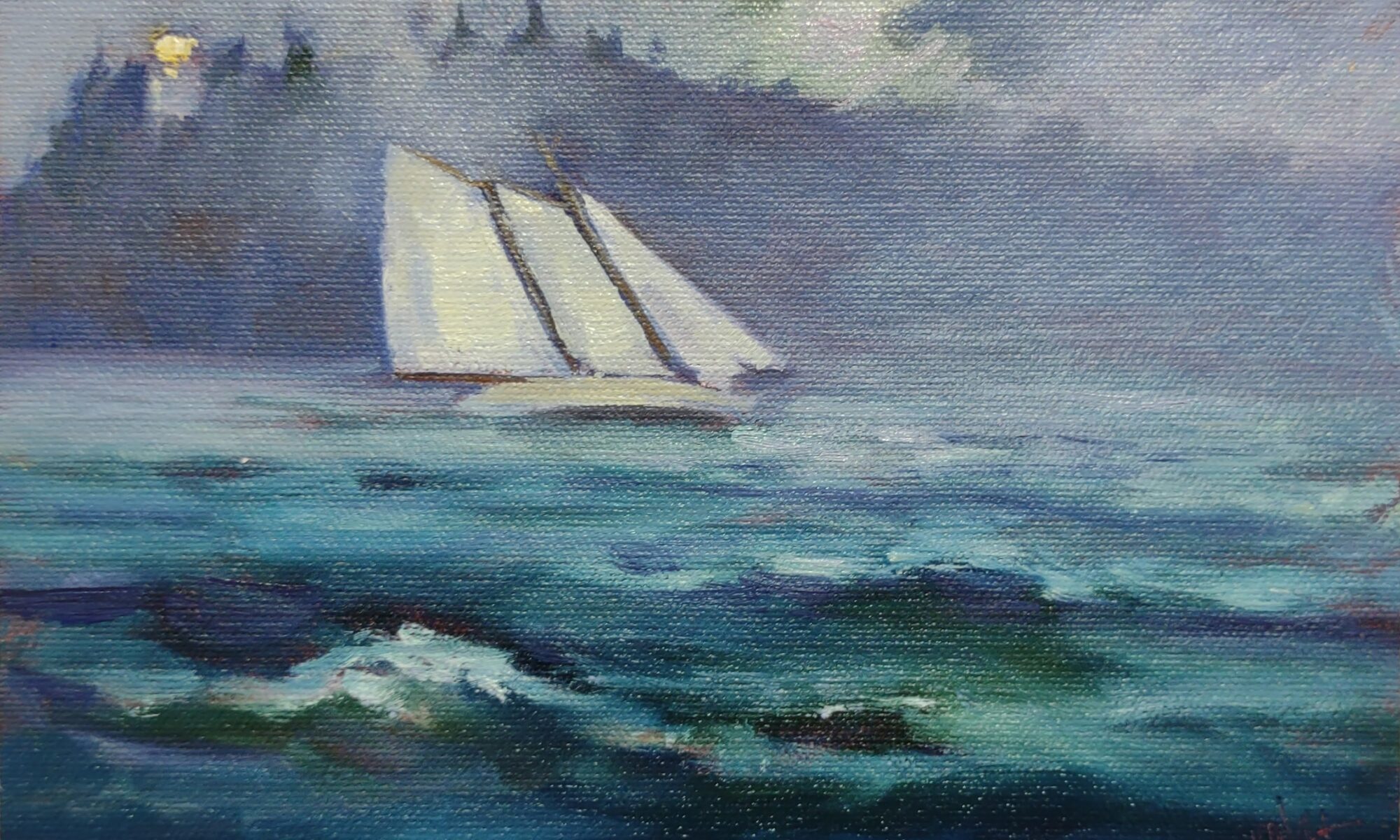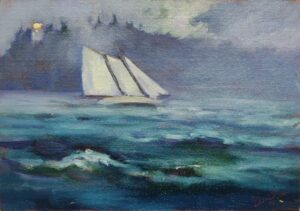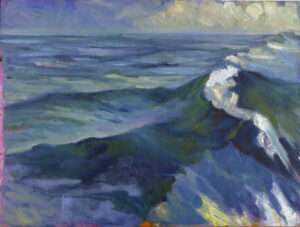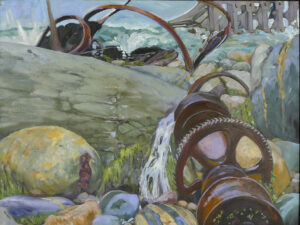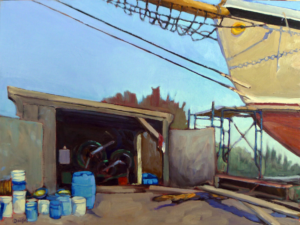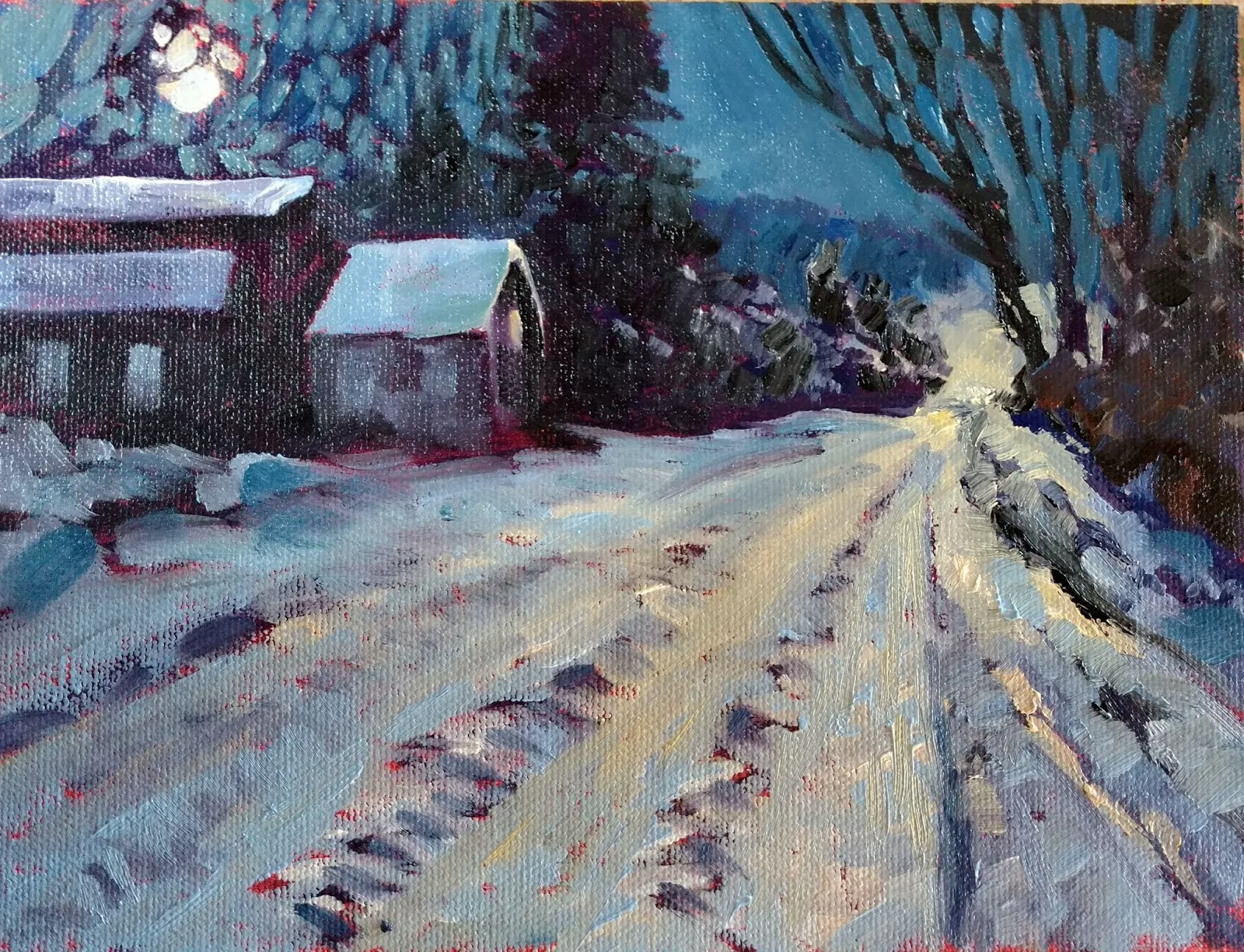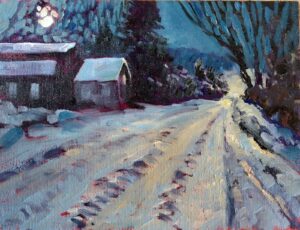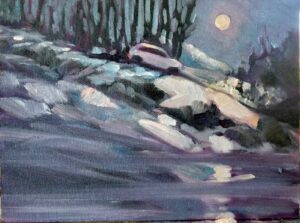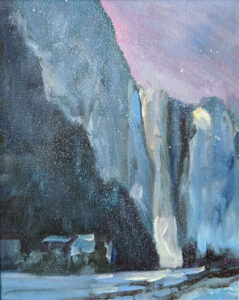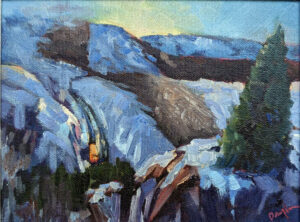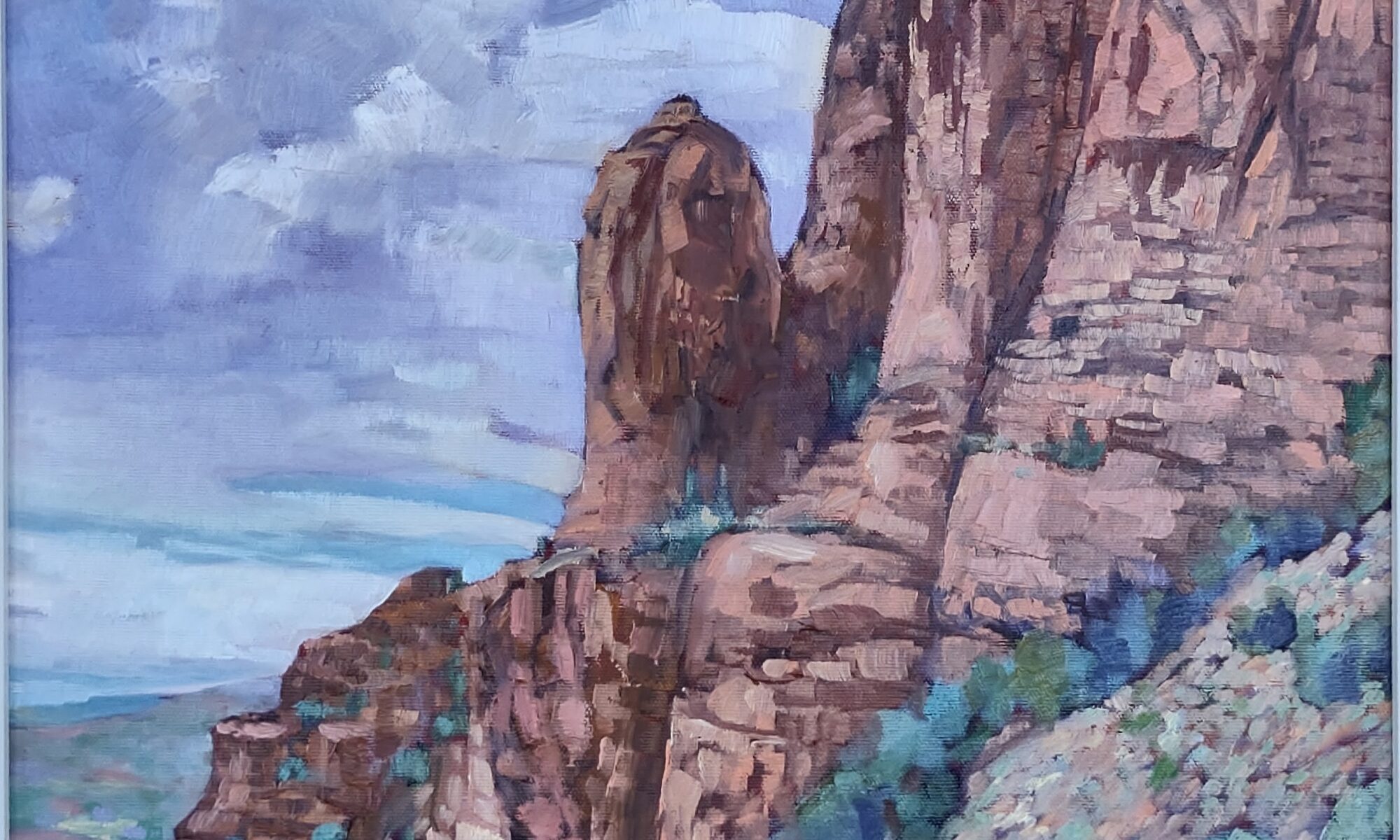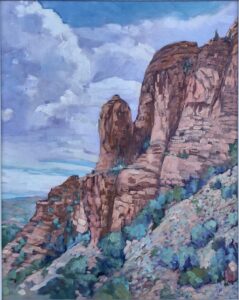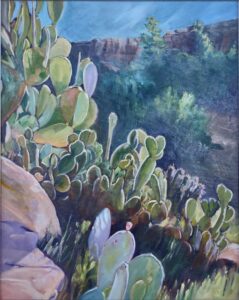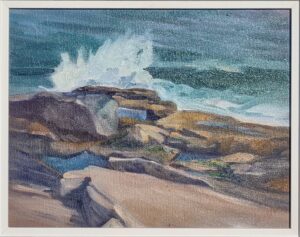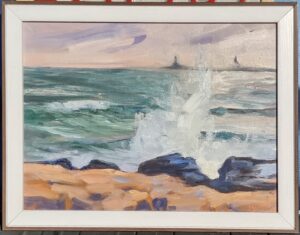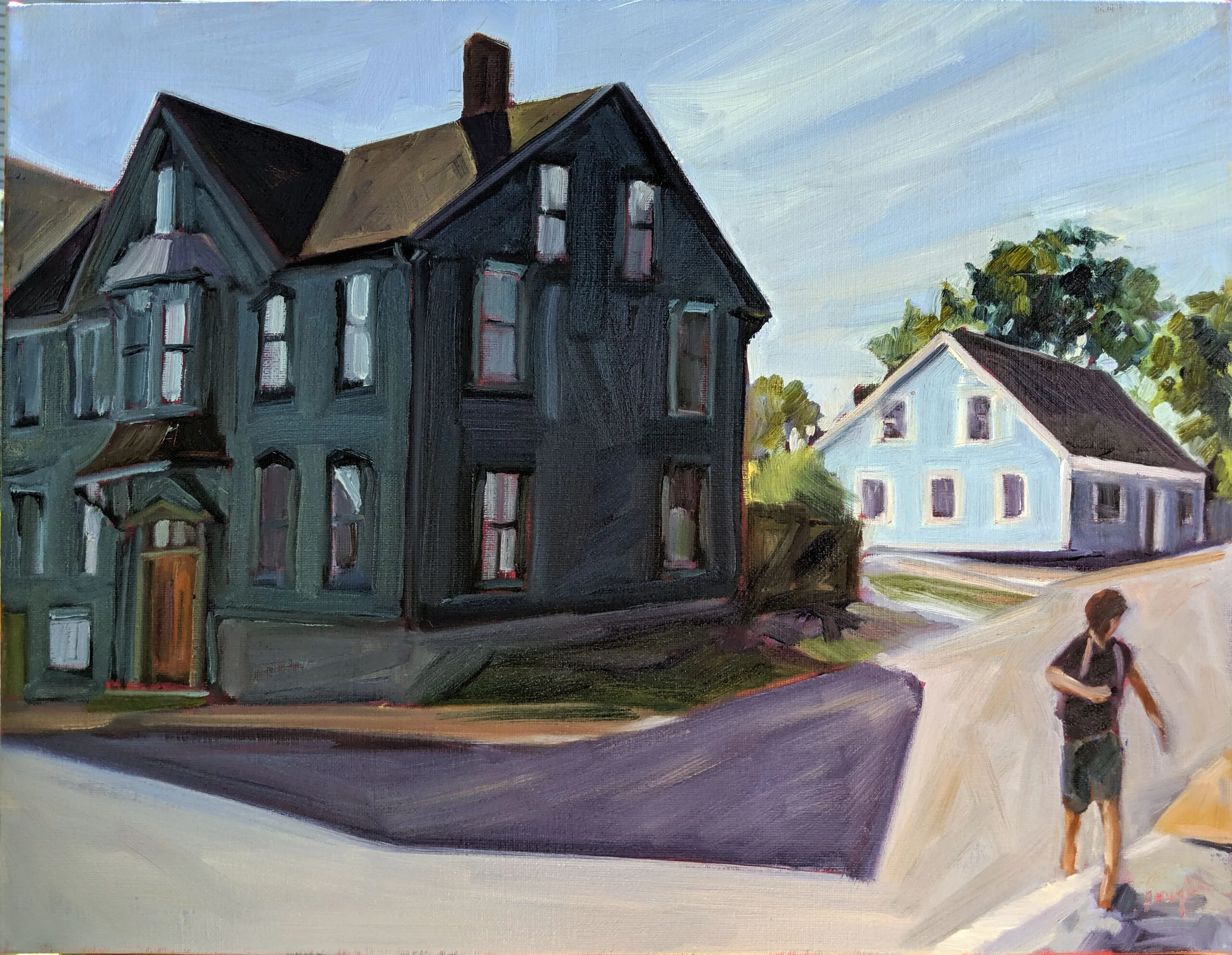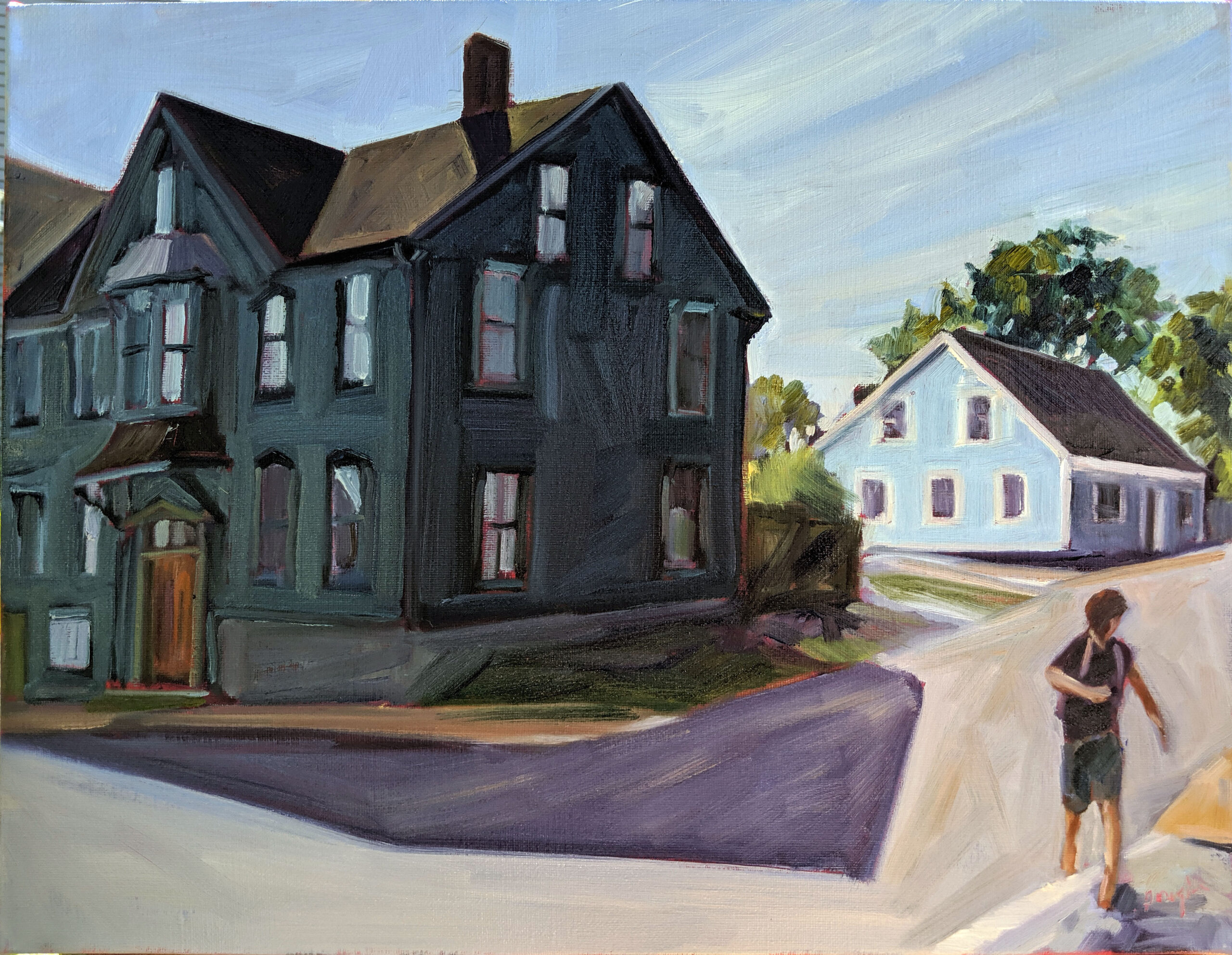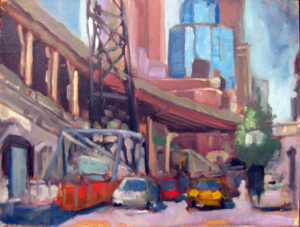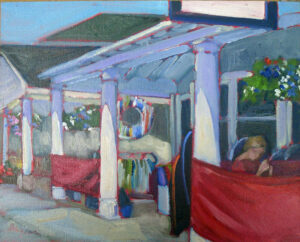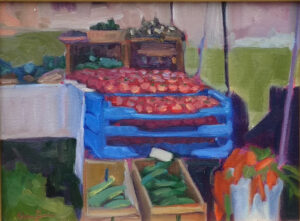One of my tasks this week was booking my air travel to my workshops in Sedona, AZ and Austin, TX in March. The price of rental cars and airfare have both dropped substantially from last year. That makes travel easier on everyone.
Often, workshop students will ask me about bringing a second medium with them. I encourage that. Watercolor and gouache kits are small and you can easily slip them in a bag with your other tools.
Mark Gale, who will be my monitor in Austin, recently bought a travel watercolor kit. At first, he was hopelessly confused by it; now he is thinking of bringing it on his next RV trip. It’s portable and dries fast. Some mediums are more appropriate for specific purposes than others.
Painting in multiple media has a loosening effect in your work. Once you get past the shock of thinking about values ‘backwards’, moving between oil and watercolor will lighten up your brushwork. Pastels can teach you to lay up colors in sparkling fields like an Impressionist, providing you don’t get sidetracked into blending. Acrylics will help you learn to not get bogged down in the weeds of modeling.
However, you have to carry this stuff
Each of these, however, requires its own set of tools and substrates, so you can’t bring them all. When I travel to workshops, I bring two suitcases. My carry-on has my personal belongings. My checked bag has my tools, canvases and paints.
Travel is always a compromise between canvas size and practicality. The less variation in size, the easier it is to pack. I like to paint big, but space is at a premium. Knowing I might bring home wet paintings, I’ll limit myself to 11/14 and 9/12. I’ll also bring a 9/12 Arches Watercolor Block and my watercolor kit.
Unless I have multiple pastel students, I don’t carry my full pastel kit. It’s too cumbersome. Instead, I can bring a small kit of NuPastels and some sanded paper. That’s enough to get my point across.
Oil painters who travel should be familiar with Safety Data Sheets (SDS). The flash point is in section nine, Physical and Chemical Properties. This tells you what you can and cannot fly with. A flash point at or below 140° F (60° C) indicates it is a flammable liquid and may not be carried in airline baggage. You’ll have to hunt, but all vendors are required to provide SDS for every product.
Turpenoid has a flash point of 129° F (54° C), so it can’t fly. Gamsol’s flash point is 144°F (62°C) so it’s legal. I buy a fresh small bottle and wrap it in its SDS with the flash point highlighted. Remember to completely empty and clean your brush washing tank before flying.
Most painting mediums have drying agents added. This gives them a flash point of under 140° F, so they can’t fly. I’ve switched to using linseed oil instead. Again, I wrap the bottle in its SDS with the flash point (500° F) highlighted.
A small tube of oil paint is 37 ml. or 1.25 oz, so is safe for your carry-on. A large tube is 150 ml., or 5 oz. It must be in your checked luggage or it will be confiscated. I pack this handy label with my oil paints.
Watercolor tubes are tiny and harmless, but the only trouble I’ve ever had flying with paints was with watercolors. Now I squeeze out what I need for the week into a palette and leave the tubes at home.
It’s very easy to forget to wash your oil painting brushes on the road, and dried brushes are unredeemable. If you can do nothing else, rinse them thoroughly in solvent and wipe them down until you can treat them properly. I sell a brush soap that I can recommend without hesitation; my daughter makes it for me.
There are several portable painting racks available, but when painting on the road, I simply lay my paintings out on a flat surface, with newspaper underneath. Unframed work gets separated with waxed paper, taped together, and packed in my checked luggage. If the paint isn’t too thick, it won’t be harmed.
My 2024 workshops:
- Painting in Paradise: Rockport, ME, July 8-12, 2024.
- Sea & Sky at Schoodic, August 4-9, 2024.
- Find your authentic voice in plein air: Berkshires, August 12-16, 2024.
- Art and Adventure at Sea: Paint Aboard Schooner American Eagle, September 15-19, 2024.
- Immersive In-Person Workshop: Rockport, ME, October 7-11, 2024.

